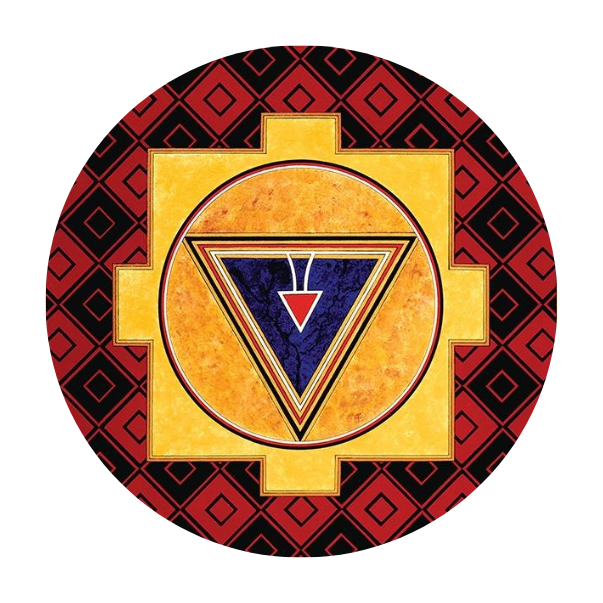theory course
Basics of
Tantra & Yoga
Philosophy and Practice
Tantra & Yoga
Philosophy and Practice
Theoretical base and extension of Kriya Raja Yoga course with Max online. Major ideas, concepts and practical approaches in various schools of Tantra and Yoga of the Indian Subcontinent and beyond. Their development and usage from historical times to nowadays. Practical philosophy with open and secret techniques.
Lesson-2
Development of Tantra in India
Tantra and the Veda are the two streams of Indian culture and civilization.
Tantra & Yoga (which grew directly from Tantra) can be seen as a practical application of the Indian philosophy. As philosophy in India is not a mere speculation but a way of life
Tantra is a very ancient science and practice.
Its theory is based in Tantras or Agamas - non canonical scriptures of Indian spiritual literature developed parallel to the Vedas and the Upanishads. But long ago both streams of thought assimilated into the organism of Hindu culture, both systems has influenced one another.
Tantra is also an intuitional science. The mystic and scientific basis of Tantra is the concept that the Reality is to be realized through Sadhana (yoga practice). It is not just about concepts but the direct experience of the practitioner. It is about awakening and going through the path of inner spiritual transformation.
The word Tantra comes from the root “tan” meaning “to expand”. So it is about expanding man’s consciousness and faculties, a process through which the individual’s inherent spiritual powers can be realized.
There is also a mystic definition of Tantra: the path which liberates from the bondages of ignorance and crudeness. The bija-mantra (single syllable mantra) “ta” is the root for “crudeness”. So, in this sense Tantra Sadhana is a progressive movement from Gross to Subtle. It liberates one from darkness and ignorance, elevates one to the level of the Divine. Through Sadhana we transmute our actions into inner awareness and bliss.
Since ancient days there have always coexisted two approaches in spiritual ways of Indian practitioners. One - ascetic path of detachment and renunciation, withdrawal from life. Another - of the fullest acceptance of life and its ways - through right vision, transforming practices and uplifting one’s nature.
This way Tantra is a synthesis between spirit and matter for achievement of fullest spiritual and material potential.
As Tantra developed largely outside the establishment, the tantric approach is anti-speculative, anti-ascetic, without conventional cliches. Its method is esoteric and not for the masses, transmitted from guru to disciple.
Tantra Sadhana is meant for the attainment of 4 objectives of life:
Our birth in a certain time and place gives us our primary programming our self-positioning and limitations. But to expand our awareness we need a kind of reprogramming of our human computer. If we want to expand and go beyond our limited program, we need some tools for that. Tantra provides these tools for us.
The main instruments of Tantra are Mantra and Yantra - we will talk a lot about it later.
But Tantric approach is a holistic one, so all sciences are involved. It is astronomy and astrology, traditional medicine of Ayurveda, psychology, geometry, alchemy and mathematics. Tantra is about synthesis and application of this holistic knowledge.
Tantra & Yoga (which grew directly from Tantra) can be seen as a practical application of the Indian philosophy. As philosophy in India is not a mere speculation but a way of life
Tantra is a very ancient science and practice.
Its theory is based in Tantras or Agamas - non canonical scriptures of Indian spiritual literature developed parallel to the Vedas and the Upanishads. But long ago both streams of thought assimilated into the organism of Hindu culture, both systems has influenced one another.
Tantra is also an intuitional science. The mystic and scientific basis of Tantra is the concept that the Reality is to be realized through Sadhana (yoga practice). It is not just about concepts but the direct experience of the practitioner. It is about awakening and going through the path of inner spiritual transformation.
The word Tantra comes from the root “tan” meaning “to expand”. So it is about expanding man’s consciousness and faculties, a process through which the individual’s inherent spiritual powers can be realized.
There is also a mystic definition of Tantra: the path which liberates from the bondages of ignorance and crudeness. The bija-mantra (single syllable mantra) “ta” is the root for “crudeness”. So, in this sense Tantra Sadhana is a progressive movement from Gross to Subtle. It liberates one from darkness and ignorance, elevates one to the level of the Divine. Through Sadhana we transmute our actions into inner awareness and bliss.
Since ancient days there have always coexisted two approaches in spiritual ways of Indian practitioners. One - ascetic path of detachment and renunciation, withdrawal from life. Another - of the fullest acceptance of life and its ways - through right vision, transforming practices and uplifting one’s nature.
This way Tantra is a synthesis between spirit and matter for achievement of fullest spiritual and material potential.
As Tantra developed largely outside the establishment, the tantric approach is anti-speculative, anti-ascetic, without conventional cliches. Its method is esoteric and not for the masses, transmitted from guru to disciple.
Tantra Sadhana is meant for the attainment of 4 objectives of life:
- Artha (wealth);
- Kama (pleasure);
- Dharma (unifying law and virtue);
- Moksha (liberation).
Our birth in a certain time and place gives us our primary programming our self-positioning and limitations. But to expand our awareness we need a kind of reprogramming of our human computer. If we want to expand and go beyond our limited program, we need some tools for that. Tantra provides these tools for us.
The main instruments of Tantra are Mantra and Yantra - we will talk a lot about it later.
But Tantric approach is a holistic one, so all sciences are involved. It is astronomy and astrology, traditional medicine of Ayurveda, psychology, geometry, alchemy and mathematics. Tantra is about synthesis and application of this holistic knowledge.

The main type of Tantras where Siva addresses his consort Parvati are known as Agamas. These are revelations in a form of instructional dialogue
Agamas have 4 parts:
If speaking about timeline and history of Tantra, it is not possible to determine when exactly tantric principles and practices were first introduced.
Tantric ritual-symbols are found in the Harappan Culture of Indus Valley Civilization (3,000 BC) in the form of yogic postures and the Mother Cult. In its later development Tantra shows the influence of Vedic culture, the Upanishads, the Epics and the Puranas, sometimes being part of these Puranas and some Upanishads. Its full development Tantra achieves in the early medieval period.
- First deals with the knowledge of metaphysical questions (like Upanishads);
- Second part is yoga;
- Third part is about ritual practices;
- Fourth about social and personal conduct.
If speaking about timeline and history of Tantra, it is not possible to determine when exactly tantric principles and practices were first introduced.
Tantric ritual-symbols are found in the Harappan Culture of Indus Valley Civilization (3,000 BC) in the form of yogic postures and the Mother Cult. In its later development Tantra shows the influence of Vedic culture, the Upanishads, the Epics and the Puranas, sometimes being part of these Puranas and some Upanishads. Its full development Tantra achieves in the early medieval period.

It is hard to separate Tantra from Yoga, especially if we look at the classical scriptures of Hatha Yoga or the teachings of Kriya and Laya Yoga
Tantra & Yoga
Yoga practice has evolved directly from tantric practices. Actually in ancient India it would have been even hard to separate Yoga from Tantra. Yoga was pretty much a way to practice Tantra.
If we see it from the modern point of view, then the more pure yogic practices have evolved from Tantra through getting more technical, getting rid of most ritualistic part - pooja and many of its symbols and tools. In a sense, purely yogic techniques became more dry and sometimes without a sense of Bhakti - devotion, which is crucial in Tantric practices. But once again, this is more true if we speak about mostly 20th century yoga development in India, as in more early periods Tantra and Yoga harmoniously go together. If we study main famous classical Hatha Yoga text "Hatha Yoga Pradipika", we will easily see that it is a very tantric approach to the practice. But we will discuss these issues further in our online course.
If a building becomes architecture, then it is art
